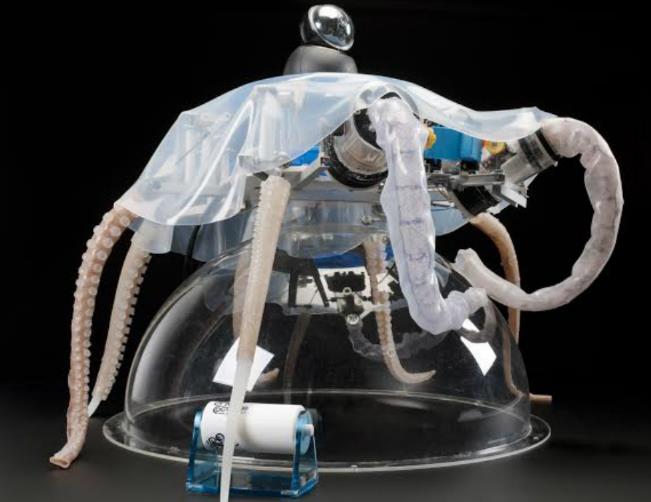A new soft robotic arm inspired by the octopus can grasp and manipulate a variety of objects, from eggs to iPhones to toy sharks. The arm, developed by engineers from China, uses suction cups and air pressure to bend and stick to different surfaces.
The robotic arm has a flexible, tapered design that mimics the shape of an octopus tentacle. The arm is covered with suction cups that can create strong seals even on rough or wet surfaces. The suction cups are controlled by a vacuum system that can be turned on and off to attach or detach the arm from an object.
The arm can also bend and twist in different directions by changing the air pressure inside the arm. The engineers used two valves to control the bending and suction of the arm. By adjusting the valves, the arm can wrap around an object, lift it, carry it, and release it.

Why the arm is useful
The octopus-inspired robotic arm has many potential applications in fields such as manufacturing, medicine, and exploration. The arm can handle delicate or fragile objects without damaging them, such as eggs, glassware, or electronic devices. The arm can also grip and move objects of various shapes, sizes, and textures, such as balls, bottles, or crabs.
The arm is also adaptable to different environments and tasks. The arm can operate underwater, on land, or in the air. The arm can perform complex maneuvers, such as untie knots, open bottles, or manipulate tools. The arm can also work independently or cooperatively with other arms or robots.
How the arm was designed
The engineers behind the robotic arm studied the anatomy and behavior of real octopuses to design their device. They measured the tapering angle of octopus arms and calculated the optimal angle for their robotic arm. They also analyzed the structure and distribution of octopus suckers and replicated them for their robotic suckers.
The engineers tested their robotic arm on various objects and scenarios. They successfully demonstrated that the arm can grasp, move, and manipulate objects ranging from thin plastic sheets to large exercise balls. They also showed that the arm can perform tasks such as writing, drawing, or playing the piano.
The engineers published their research in the journal Soft Robotics.
